
Female impersonator Paul Cummings performed as LaVerne at Finnochio’s, a San Francisco club, famous for impersonators who could sing like women.
Thursday, March 10, 2011 | midnight
December 1982. LaVerne Cummings walks onstage at San Francisco’s world-famous Finnochio’s nightclub, just as she has for more than two decades. All eyes are on her—and that gorgeous, custom-tailored gown she’s wearing. Behind her the band begins to play, and when her cue comes, LaVerne opens her mouth to belt that all-important first note … but nothing comes out.
The band restarts the intro, and LaVerne tries once more. Again, nothing but air. Just like that, it seems the beautiful soprano voice inside Finnochio’s headliner has disappeared. LaVerne runs offstage for the final time. You might say she died right there and then.
Female Impersonators of the Past
Ever heard a man perform a duet with himself as a woman? Former female impersonators Paul Cummings and David De Alba sing for the Weekly and share stories from their 30+ years entertaining at the famous Finocchio's club in San Francisco. The 63-year-old club closed its doors in 1999, but Paul and David retired in Las Vegas and are still available to perform; contact David at [email protected] or visit David's website.
Paul Cummings' Duet with Himself
Former female impersonator Paul Cummings of the famous Finnochio's nightclub in San Francisco sings a duet, accompanied by himself as his female character, Lavern Cummings.
Today Paul Cummings is in his 80s and living on Las Vegas’ west side. His apartment is modest, the remnants of his colorful past as LaVerne and its swift end confined to photo albums tucked neatly away on shelves. To a stranger, he might seem like any random California-bred retiree who moved to Vegas for cheaper rent and buffets—nothing special at all, really—but he is.
Cummings is one of the only Finnochio’s performers still alive, and the nightclub had plenty of them throughout its 63-year existence. Another survivor, David de Alba, is a fast-thinking, fast-talking female/celebrity impersonator who, coincidentally, also lives in Las Vegas.
That these two men independently wound up in Southern Nevada may not be that remarkable a feat. The area has long been a transient refuge, especially for aspiring entertainers, the formerly famous and the infamous. Still, together, the two men embody the history of a San Francisco landmark—and the growth of cross-dressing cabaret in America, a phenomenon alive and well today in acts like Frank Marino’s Divas Las Vegas.
“If I’d known then what I know now I would have interviewed everyone at Finnochio’s,” de Alba says. “I’d have taken more photos and videos.”
Luckily, for these two it isn’t too late, and both are happy to think back on a time when sparkling gowns were their outfit of choice, when their singing turned heads and when, on occasion, they’d run into Colonel Sanders.
But we’ll get to that.
“I was lucky my voice lasted as long as it did,” Cummings concedes, “especially when you consider all those smokers and breathing in that secondhand smoke you inhale from four shows a night for years.”
A native of Southern California, Cummings grew up being told he would grow out of his high soprano voice, but he never did. Instead, he developed into what’s called a “split-voice” singer, with the ability to sing in a lower, traditionally male voice as well as a higher, female-sounding style. Don’t call it a falsetto, though. “I never liked that term,” he explains. “It suggests the voice is false, and it wasn’t. It was very real to me.”
That unusual talent led Cummings to enter an amateur singing contest for men who could sing like women. He placed second, and the venue offered him a job. Before he knew it he was shopping for wigs to become a full-time entertainer. When wigs—made of real hair in those days and therefore quite expensive—didn’t prove a viable option, Cummings went with a natural approach. He grew out his hair, a foreign concept for men in the pre-hippie era.
The gimmick worked. “I would be announced as ‘the only person on our stage who can’t cut his hair because it’s a clause in his contract,’” Cummings remembers. The natural locks even prompted his bosses to enter him—undercover—in the Miss National Boatrace beauty pageant, as a stunt for his touring company.
“The night of the contest, I was getting ready to go onstage for the preliminaries,” Cummings says. “I was in my bathing suit when I was arrested, handcuffed and taken to jail. Somebody had squealed.” He spent the night in jail; it wasn’t until the next morning, when his facial hair began to show, that his manager delivered a set of male clothes. “The judge and everyone were disappointed,” Cummings says. “They were hoping I’d appear in court in my bathing suit.” Cummings was set free after paying a small fine. Trade publication Variety reported on the incident.
That piece was positive. Other coverage of female impersonation was not. “Some of the write-ups called us ‘creatures.’ They’d say, ‘The creatures paraded around in female attire,’” Cummings recalls of the era, decades before RuPaul’s Drag Race and Maury Povich’s “Man or Woman?” episodes. “When we played Texas, forget it. They used all the derogatory terms—the F-word, the Q-word. Even in Pittsburgh, once we went to a restaurant after work and a gang of punks chased us off.”
Despite the vitriol, however, males-as-females acts typically brought out crowds. “We were always a big draw,” Cummings says. “Bigger than the so-called ‘straight acts.’”
When he grew tired of life on the road, Cummings accepted a job at Finnochio’s, the SF nightclub that prided itself on female impersonators who could sing live. There, for 26 years, Cummings let crowds from around the world come to him. He began with a bit part, then eventually moved into the headlining slot, where he stayed until that fateful day in ’82, an incident doctors later attributed to asthma.
“In the heyday, people always wanted to see you out of drag. They were so curious,” he says. “They didn’t realize that some of the performers were married to the cocktail waitresses, and that not all the impersonators were gay.”
That air of mystery slowly dissipated. Mainstream America became more aware of cross-dressing, male-female celebrity impersonation grew in popularity, and lip-syncing became an accepted form of entertainment. By the time those cultural shifts hit Finnochio’s and helped force its closure in 1999, Cummings was long gone.
He’d moved to Vegas—and he wasn’t the only one.
De Alba worked at Finnochio’s for two decades as a female impersonator, distinguishing himself by singing in several languages, including French and his native Spanish. The former—in the form of an Edith Piaf tribute medley—even garnered de Alba post-show praise from a man claiming to be the French singer’s former pianist. “He told me she would be happy in heaven,” de Alba says.
That’s the kind of audience Finnochio’s had. Celebrities and politicians—Marilyn Monroe, Lucille Ball and Richard Chamberlin among them—came in to see the nightly performances. Some snuck in and out while the houselights were low.
De Alba remembers one particularly memorable interaction with “Colonel” Harland David Sanders—yep, the Kentucky Fried Chicken guy. In those days, the restaurant chain gave out free strawberry pie to its customers, but on this day, Alba had left KFC pie-less. “So, when I saw him in the audience that night I told him, ‘Sir, I went to buy your finger-licking chicken and they said they were out of pie!’ The Colonel stood up and said, ‘Listen, boy. If you ever go to Kentucky, I will give you several pies.’”
The audience thought the banter was part of the act, but de Alba insists it wasn’t. “That was Finnochio’s,” he says with a laugh.
Veering from the preset schedule was always an option at the club. It proved the vocalists were actually singing. “We would hear people in the audience say that we had to be lip-syncing,” de Alba says. “When that happened I would have the band stop, and I would just sing a cappella. You’d hear them correct themselves and say, ‘Ohh … I guess they actually can sing.’”
Though he’s spent decades impersonating Liza Minnelli and Judy Garland, de Alba also appreciated Finnochio’s dedication to female impersonators who focused not on capturing a famous icon’s character but on simply passing as a female. “We didn’t want to sound like a male in drag,” he says. “We didn’t have celebrity impersonators. [Co-owner] Eve [Finnochio] just told us to make ourselves up to look pretty as a female.”
Sometimes it worked too well. It wasn’t uncommon for straight male guests to hit on the performers. And women who came into the club? Cummings says some “resented” the act. “I think they thought we were making fun of them, but I don’t think so. I admire women. We just wanted to try and look, move and sing like a female.”
Cummings and de Alba prefer the term “female impersonator” to “drag queen.” The latter is derogatory, they say, and makes a mockery of what they believe has serious artistic merit. “It wasn’t easy,” de Alba says of the singing. “Sure, it takes some skill to lip-sync. You have to have the timing down and know the words. But come on …”
De Alba left Finnochio’s in 1989, when his contract ran out. After floating through several cities, he settled in Southern Nevada. “I know the Strip is untouchable, but it’s still an entertainment town,” de Alba says. “We figured we’d be better off here.”
KSNV: Female Impersonators of the Past
KSNV's coverage of the Weekly's story on female impersonators Paul Cummings and David De Alba, who dressed and sang as women for more than 30 years at the famous Finocchio Club in San Francisco. Read the full story and see Paul Cummings sing a full duet with himself at LasVegasWeekly.com.
After working at a department store for more than a decade post-Finnochio’s, Cummings also settled on Las Vegas. “It’s invigorating,” he says. “There’s the heat, but we have a lot of things to do close by.”
Though he’s still unable to sing as a female, Cummings occasionally sings in his male voice and talks about his experiences as an entertainer. He’s played extra roles in several movies and television series filmed in the Valley, including Las Vegas, Pay It Forward and the Ocean’s Eleven franchise. He’s retired, but keeps himself busy with little projects and friends. “I don’t have too much family, though,” he says. “I outlived them all.”
De Alba also still performs occasionally. He has staged a mini-play about his Finnochio’s experiences, and last year held a Judy Garland tribute at the Summerlin Library. De Alba says booking those sorts of shows has become necessary because of government cutbacks, but he’s hopeful he can continue to perform in some small way.
“I don’t mean to sound ungrateful,” de Alba says, “but I look back at my golden past, and I look at where I am now … things just seem pale.”
Cummings has a sunnier outlook on the past. “It was joyful. It got better and better throughout the years, until that fateful time I lost my voice. But hey, life goes on. To have had that for as long as I did was good.”
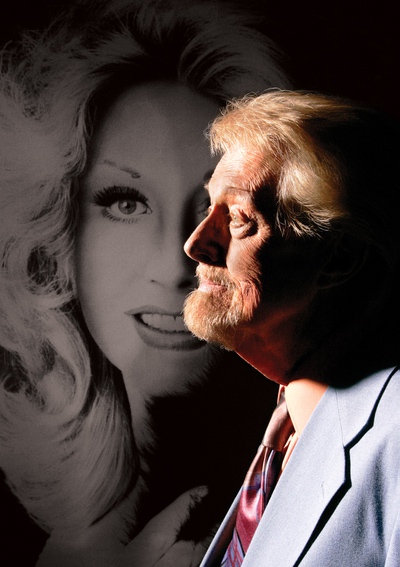
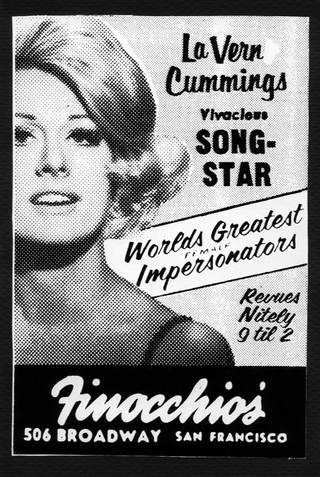
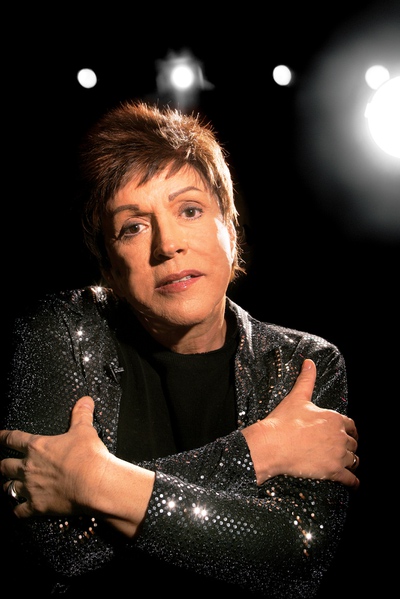
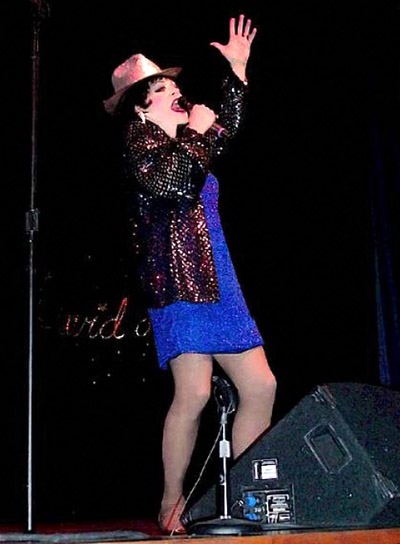
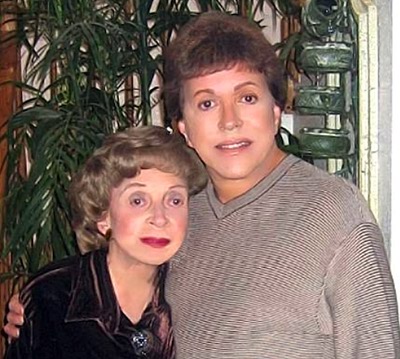
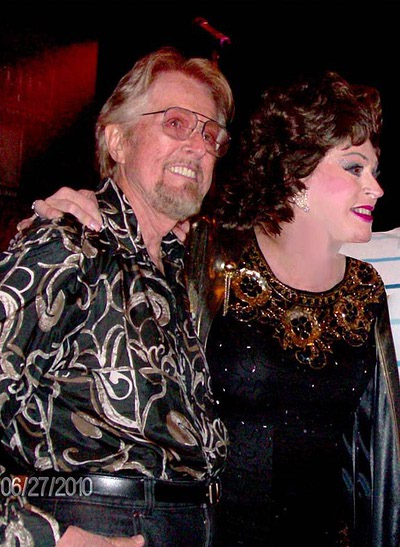

Join the Discussion:
Check this out for a full explanation of our conversion to the LiveFyre commenting system and instructions on how to sign up for an account.
Full comments policy